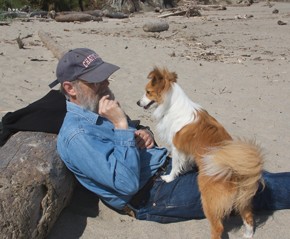Alan Shanks studies ecological interactions of organisms with coastal physical oceanographic and environmental processes. Previous work involved larval distributions in nearshore waters, coastal transport and recruitment to reflective and dissipative shores, and limpet population dynamics. (1) An example REU project would be examining whether intertidal limpets alter their behavior following experimentally manipulated exposure to high air temperatures. With climate change the number of heat-wave days is increasing. At low tide, intertidal organisms are exposed to high temperatures during heat waves. This exposure causes physiological stress, but may also alter their behavior, most likely causing them to stop feeding for a time. If this is the case and heat waves are frequent enough, then their heat-wave altered behavior could cause reduced growth and reproductive output and, because limpets are central players in intertidal habitats, could alter the composition of intertidal communities (2) Because of the on shore movement of water, toxins from harmful algal blooms (HABs) should be higher at dissipative than reflective shores and, hence, filter feeders at dissipative shores should be more contaminated than those at reflective shores. Surf zone hydrodynamics alters the delivery of coastal phytoplankton subsidies to the shore (Shanks et al 2016). Wide surf zones are more dissipative and rip currents within these surf zones effectively exchange the water within the surf zone allowing coastal phytoplankton species, including HAB species to contact the shore and intertidal zone. At shores with narrow surf zones, reflective surf zones, the hydrodynamics limit the delivery of coastal phytoplankton to the shore. REU students could readily be incorporated into projects like these to design experiments and test hypotheses on limpet activity or HAB toxins.

